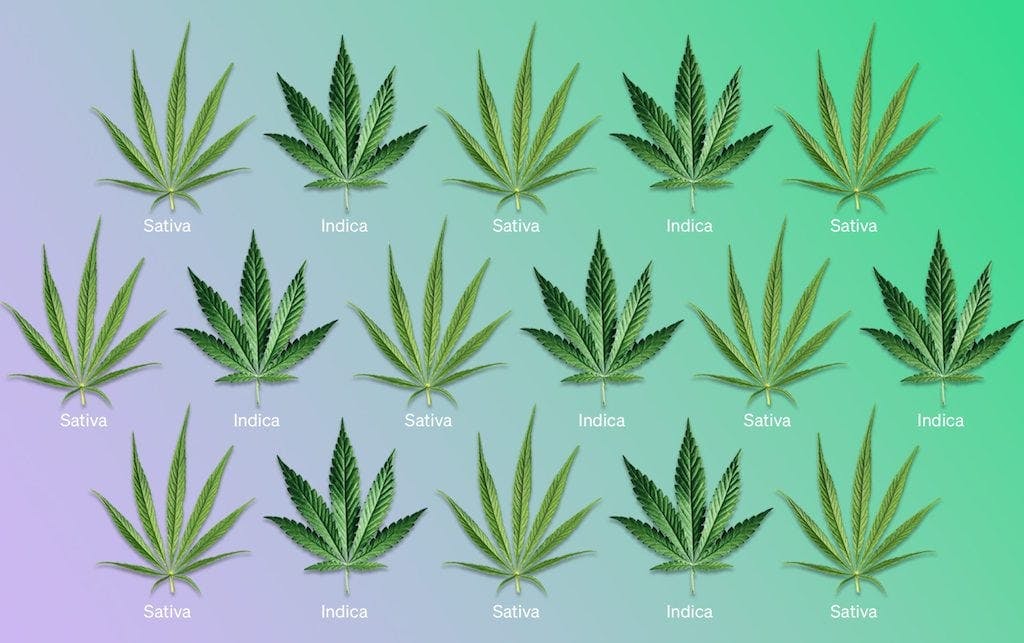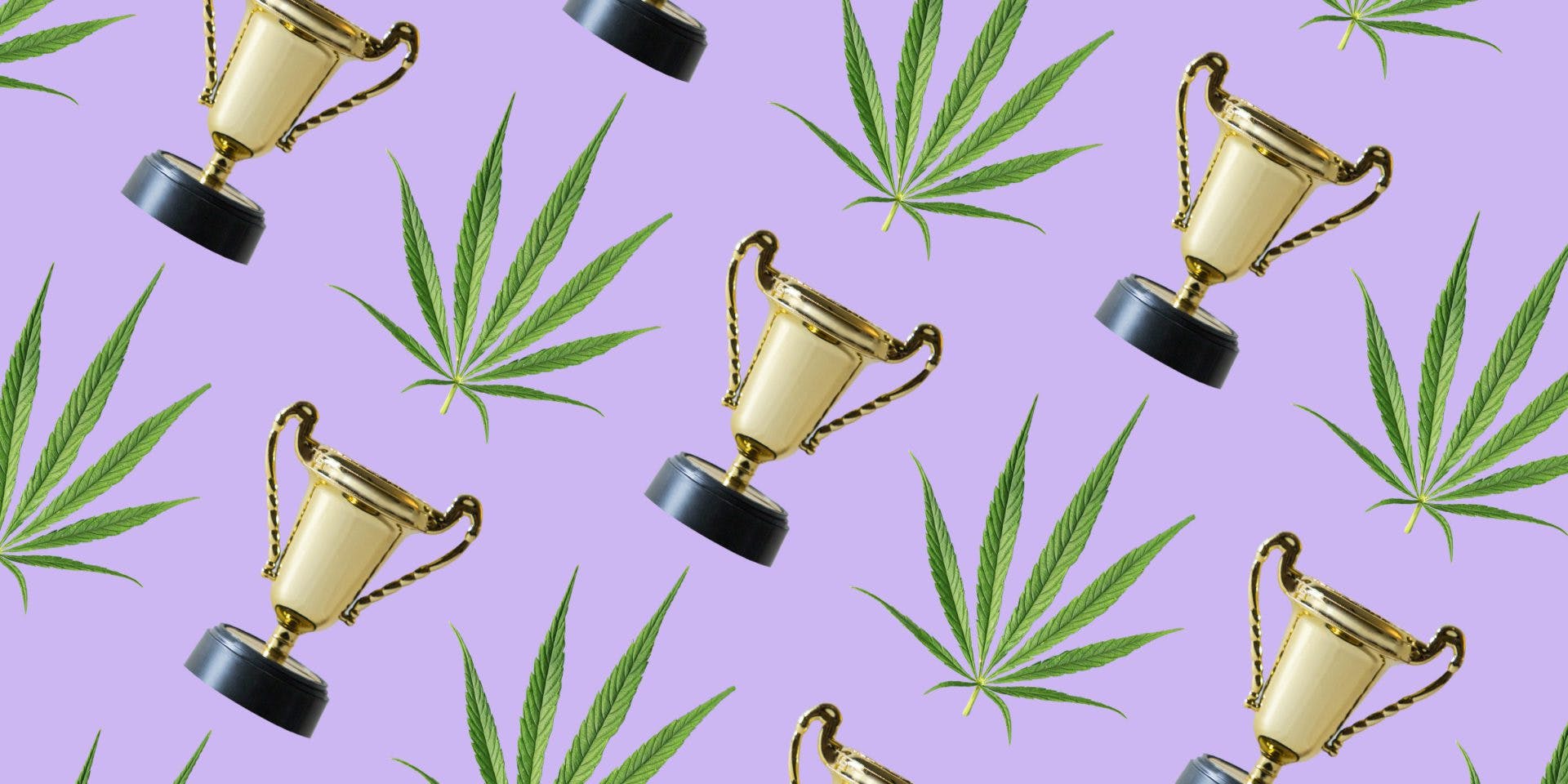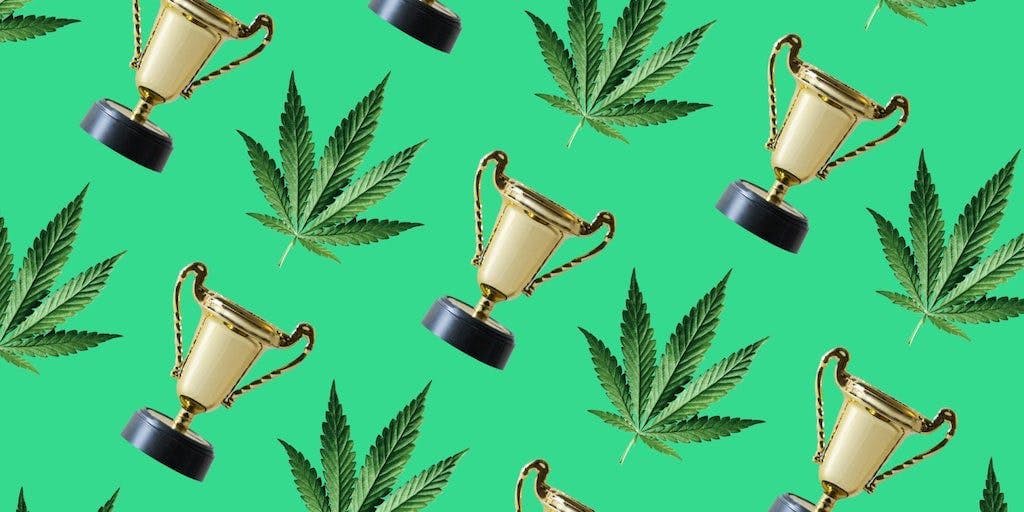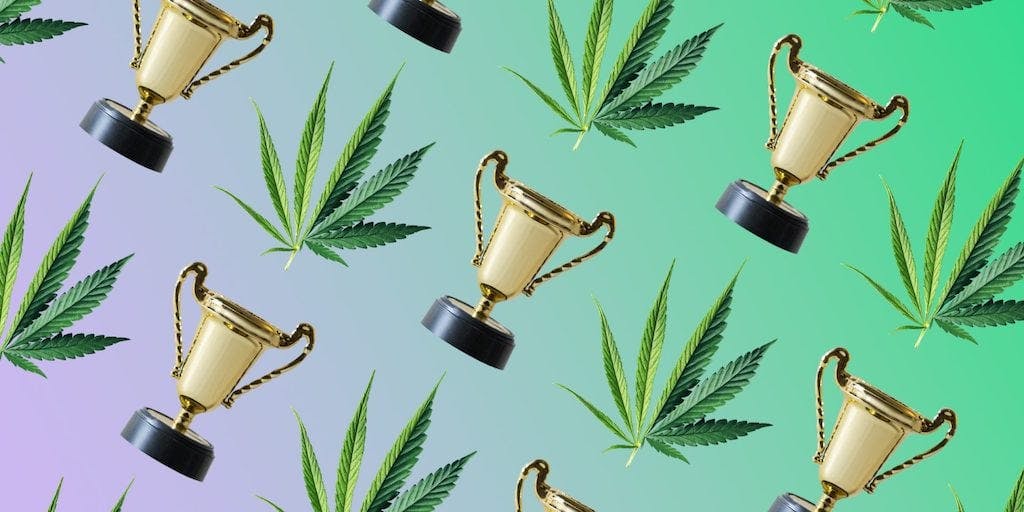Sativa vs. Indica vs. Hybrid Cannabis: How They’re the Same (and How They’re Different)

Article written by

Tina MagrabiSenior Content Writer
Content reviewed by

Dr. Lewis JasseyMedical Director - Pediatric Medicine
Previously, it was thought that the main difference between sativa and indica cannabis plants is that sativa plants produce more energizing effects, while indica plants help with deep relaxation. Hybrids are cannabis plants that are a combination of indica and sativa.
However, this distinction between sativa and indica is not entirely accurate. Many factors affect what effects cannabis will have.
French biologist Jean-Baptiste Lamarck named the varieties found in India Cannabis indica, and Swedish botanist Carl Linnaeus coined the hemp varieties he found Cannabis sativa. Sativa and indica generally do not significantly differ in cannabinoid or terpene expression at the chemical level.
Growth patterns alone do not determine what effect a strain (more accurately called a cultivar) will have.
Get your medical marijuana card
Connect with a licensed physician online in minutes.
What Is Sativa Cannabis?
Sativa is cannabis from Eastern Europe, Russia, or Central Asia. Hemp varieties, often grown for their stalk and fiber rather than flower, could be classified as Cannabis sativa.
This cannabis plant is taller and has a flowering time ranging from 10 to 14 weeks. Branches are spaced out, and the buds/flowers are less dense.
Cannabinoids
Sativas usually contain more THC than CBD, and prominent terpenes can include terpinenes, beta-caryophyllene, and limonene.
Some sativas from equatorial regions are high in tetrahydrocannabivarin (THCV). However, this is not always the case, and indica varieties may also have similar cannabinoid and terpene profiles, depending on the parents used to create it, the environment it is grown in, when the cannabis is harvested, and the phenotype expressed.
Effects
Sativa produces a high that could make you feel on top of the world, able to conquer any challenge. You may feel creatively inspired when using sativas, or you may feel like running a marathon.
This is not always true, but our popular understanding of what a sativa does is. Perhaps a more accurate way to see if a sativa has a more uplifting effect is to look at the cultivar, the region, and the cannabinoid and terpene content.
Varieties that contain THCV combined with cannabigerol (CBG), limonene, pinene, and beta-caryophyllene may have more energizing effects and are typically from equatorial regions. Examples of these strains (cultivars) include Durban or Mozambique Poison.
When to Use
Use sativas during the day, especially in the morning, perhaps in place of a cup of coffee. Avoid using sativas at bedtime, as the energizing effects can lead to insomnia. Again, this is not always the case, and some myrcene- and THC-rich varieties may induce sedative effects.
Popular Sativa Strains
Here are five of the most popular sativa strains:
What Is Indica Cannabis?
Indica is cannabis from India and Afghanistan.
Due to the harsh, mountainous conditions that Cannabis indica grows in, it tends to be shorter and stouter in size and can grow well in more temperate climates. Indicas also have a shorter flowering time of between six to nine weeks.
Cannabinoids
Indicas usually contain high levels of THC (similar to the amounts found in Cannabis sativa). However, some indica varieties also have high amounts of cannabinoid CBD. Terpenes like limonene, linalool, beta-caryophyllene, and myrcene may be more likely to present themselves.
Effects
Indica strains are known for producing the so-called couch lock effect, in which you are glued to your seat and don’t want to move. Indica effects could feel more tolerable for some people due to the higher CBD content, leaving them pleasantly sedated from head to toe.
But to say again, these are rough distinctions and do not hold all the time. Many CBD-rich cannabis varieties are sativas, meaning that the potential for a cannabis plant to express a variety of different cannabinoids is within its genetic makeup.
A plant’s environment (temperature, humidity, altitude, etc.), the stage in its flowering cycle that it was harvested, and the amount of light received make a difference in which cannabinoids are ultimately expressed.
When to Use
Some people use indica strains at night as a natural sleep aid. While indica strains may or may not help you sleep, they are best to use when you’ve cleared your schedule and can relax.
Popular Indica Strains
Here are five of the most popular indica strains:
- Hindu Kush
- Purple OG Kush
- Northern Lights
- Sensi Star
- Blueberry and CBD Blueberry
What Is Hybrid Cannabis?
Hybrid cannabis contains a combination of sativa and indica genes, and most cannabis plants are hybrid varieties.
The distinction between pure indica strains and pure sativa strains is mostly meaningless, differentiated by terpene profile and growth pattern rather than any significant differences.
Hybrid strains are usually called sativa-dominant, which may contain more herbal and sweet terpenes like farnesene and bergamotene, or indica-dominant, where the sedative terpene myrcene is more dominant.
Whether a plant is deemed indica-dominant or sativa-dominant depends on where the majority of the lineage of the specific strain came from, its morphology, and subjective matters such as the flavor and aroma of the plant.
Examples of popular hybrid strains include:
- Girl Scout Cookies
- OG Kush
- White Widow
- Gorilla Glue
- Jack Herer
- Chiquita Banana
- Purple Kush
- Bruce Banner #3
- Chemdog
- Sour Space Candy
- Blue Dream
- Cherry Pie
These are just a sampling of the most common hybrid strains you can try. Hundreds more hybrid marijuana strains exist, each of which may offer different possible health benefits depending on their exact lineage and the rest of their chemical makeup.
How Is Hybrid Cannabis Made?
Hybrid cannabis is created by crossing one strain with another (known as cultivars). This is achieved by breeding male and female plants of different strains. For example, a cannabis cultivator may cross a pure male indica with a pure female sativa to produce a 50/50 hybrid (like NL5 x Haze).
During the breeding process, the male plant pollinates the female plant, producing seeds of both plants and, therefore, both strains.
The offspring of the crossbred male and female plants will display qualities from both, although sometimes you may get phenotypes that resemble one parent more than the other.
Hybrids often participate in selective breeding programs to target and produce the most desirable qualities from parent plants.
Potential Health Benefits and Uses
Hybrid cannabis offers the same potential health benefits and uses as pure, landrace cannabis that has not been crossed with another variety. Here are some ways that hybrid cannabis could help improve your mental and physical health:
Decrease Depression and Anxiety
While not universal, some people may be able to reduce feelings of mild to moderate depression and anxiety with cannabis.
Cannabidiol (CBD) has demonstrated potential in helping to manage generalized anxiety disorder, panic disorder, social anxiety disorder, and post-traumatic stress disorder (PTSD). However, some people may experience an uptick in anxiety when using cannabis. Speak with your doctor before beginning a cannabis regimen to treat depression, anxiety, or any other ailment, especially if you are on prescription medication.
Sleep Better
People with less depression and anxiety naturally sleep better. Some hybrid cannabis strains may help you battle insomnia. As with depression and anxiety, the cannabinoid CBD is especially beneficial for people seeking better sleep.
Ease Chronic Pain
Pain relief is one of the most common reasons people seek out medical marijuana.
Cannabis has been shown to help ease many kinds of pain, including muscular, joint, and neuropathic (nerve) pain. People with cancer undergoing chemotherapy may experience severe levels of nerve pain, which cannabis may reduce. Neuropathic pain is one of the most challenging to treat, making a plant-based medicine like cannabis all the more vital.
Reduce Inflammation
Inflammation is a leading cause of disease, including debilitating autoimmune conditions like Crohn’s and many types of cancer. Some studies have found that cannabis can shrink tumors and kill cancerous cells.
Many other potential health benefits are associated with hybrid cannabis, from simple mood-lifting to improving overall brain function.
Potential Risks and Side Effects
Cannabis side effects are usually mild and transient. Hybrid cannabis strains carry the same possible risks as pure Cannabis sativa or Cannabis indica. You may or may not experience some of the following side effects when consuming hybrid cannabis:
- Red eyes
- Dry mouth
- Paranoia or hallucinations
- Headache and nausea
- Lightheadedness
- Fatigue
These side effects may be more likely if you are new to cannabis or if you have consumed too much cannabis in a short time. You can help yourself recover from the side effects of cannabis simply by relaxing or chewing on black peppercorns.
Whatever you do, know that the side effects you’re feeling are temporary, and no fatal overdose of cannabis has ever been documented.
Other Types of Cannabis
There’s more to the world of cannabis than just indica and sativa. Ruderalis and hybrids are other cannabis plants that produce strains with distinctive characteristics.
Ruderalis
Cannabis ruderalis is low in THC and doesn’t get most people high. Most ruderalis strains (varieties or varietals) contain less than 3 percent THC and are rich in CBD.
Cannabis ruderalis is native to Central and Eastern Europe and Russia. Due to the short growing seasons in such environments, Cannabis ruderalis growth and flowering are triggered by age rather than light. This is called auto-flowering, a characteristic that provides vast benefits for the cannabis-growing community.
There is a lot of debate about whether ruderalis is a subspecies of Cannabis sativa, but the plants can be crossed with one another. This can reduce THC content in some cases but can also improve disease resistance and reduce the height of the plant, making it ideal for guerilla growers and those growing in more temperate climates.
Ruderalis strains are easy to grow, so that they can be ideal for beginners starting a small garden. Popular ruderalis strains include Royal Haze Automatic, Haze Berry Automatic, and Amnesia Haze Automatic.
Hemp
Hemp is a variety of Cannabis sativa grown for its stalk and fiber content rather than its cannabinoid content. This means that, even though hemp does produce cannabinoids, it does so at a much lower level than sativas or indicas.
Hemp may contain higher CBD levels than THC, and hemp may also have more CBD compared to THC-rich varieties of cannabis.
While hemp is related to sativa and indica, it is not entirely the same, as they have different uses and chemical compositions. The other distinction is legal — hemp must contain less than 0.3% THC in the U.S. Otherwise, it is considered cannabis or marijuana (the illegal kinds).
Landrace Cannabis Varieties
A landrace cannabis strain or varietal is a type of cannabis grown in a specific geographic location but has not been crossed and hybridized with any other kind of cannabis.
Landrace varieties are where you may find distinct chemical compositions and growth patterns in the cannabis plant, so this is one area where a sativa/indica distinction may be more apparent.
Landrace cannabis can be difficult to grow outside its environment of origin, and many become hybridized eventually to improve their vigor and adaptability to different climates. However, breeders often attempt to retain the original characteristics of the landrace variety to keep their unique profiles in the cannabis gene pool.
Choosing the Right Cannabis for You
What works for you could come down to a range of factors.
No matter how you classify cannabis, indica, sativa, hemp, and ruderalis, all of these plants may benefit you in different ways. You may even prefer more CBD during the day to help ease pain and anxiety when out and about, but something with a little more THC and cannabinol (CBN) at the end of the day when you need to get to sleep.
Ultimately, the best way to determine if a strain or product works for you is to look at the test results on the packaging and test a few different products for yourself.
Do not rely on the indica/sativa distinction, as these are now primarily meaningless (there are arguably still some differences in the terpenes expressed, however, which can be due to the breeder’s influence).
Another thing to consider is that the same cannabis strain (e.g., OG Kush) could vary wildly in its chemical composition from one place to another. This could be due to mislabeling or a breeder attempting to sell different seeds under a well-known name, but it can also be due to various environments.
Why Dosing Matters
Getting the correct dose is one of the most challenging yet crucial aspects of using cannabis, which is why getting a doctor’s prescription is advisable. Here are some general guidelines for dosing, whether you’re using indica, sativa, ruderalis, or hybrid strains.
- High THC, CBN, and CBD mixed with linalool, myrcene, and humulene are more likely to give you sleepier effects.
- High doses of CBD have been reported as having more sedating properties, but lower or more moderate doses may be more energizing.
- THC’s psychoactive properties are considered more tolerable when CBD is used in equal ratios to THC (i.e., 1:1). When CBD ratios are higher than THC’s, its psychoactive effects may be reduced to some extent. However, high doses of THC can still have psychoactive effects, even in CBD-rich cannabis varieties products.
- THC and high doses of THCV, limonene, beta-caryophyllene, and pinene also produce highly psychoactive effects. It could be beneficial as a mood enhancer in lower doses but overwhelming in higher doses.
- Low doses of THCV can reduce the amount of time THC exerts its effects. This is because low doses of THCV are a CB1 receptor antagonist, meaning it can have anti-psychoactive and appetite-curbing effects.
- High doses of THCV have psychoactive effects and can add to THC’s psychoactivity.
- Combining CBD, CBG, low THCV, pinene, limonene, and beta-caryophyllene may have more stimulating effects.
- Terpenes may affect how cannabinoids and other terpenes behave. Terpinolene is a fruity-smelling terpene that can have sedating effects on its own. It is used with THC and terpenes like linalool and myrcene (as can limonene and pinene). Still, it is possibly more energizing when mixed with limonene, pinene, and beta-caryophyllene. The entourage effect is real. Terpinolene is a subset of terpinenes, which can have distinct effects.
- CBD also behaves like this and has different effects combined with cannabinoids and terpenes. CBD may be more relaxing when mixed with myrcene but more awakening when mined with limonene and pinene. Beta-caryophyllene can be soothing and awakening, depending on which other cannabinoids it combines with.
- Ask yourself what you hope to achieve with cannabis. Create a dosing plan to help you get there.
- You will likely need to taper your intake of opioid- or opioid-based medications, benzodiazepines (e.g., anti-epileptic and some anti-anxiety drugs), and sedatives if you use any of these.
- The classic sativa and indica distinction is inaccurate and is not the best guide regarding a particular product’s effects. Pay more attention to test results; if these don’t exist, the genetic lineage and the environment in which the cannabis has been grown can give some clues if this information is available.
- Black-market vape pens and the like are not worth the cost and potential health problems.
- Get a medical marijuana card and a doctor’s recommendation for the best dosing results.
Sativa vs. Indica vs. Hybrid: The Bottom Line
It is no secret that many of today’s strains are based on a handful of genetics released many years ago, so without concerted breeding for specific traits in chemical makeup, many strains are more likely to be similar than different, with the occasional outlier.
Perhaps the best way to get to the heart of this matter is to take a closer look at all the strains and consider any differences in the cannabinoids and terpenes playing their part in the entourage effect.
There could be differences we are not seeing, and maybe some types of cannabis from specific countries are unique. Still, it is best to look at what compounds the cannabis contains and not what it looks like when being grown and arbitrarily labeled by the grower, dispensary, or anyone else with a potential bias.
Then, we can see patterns and discern genetic similarities between strains properly. Until then, all evidence suggests that the traditional classification method is mostly wrong, and we may need to eliminate it.
Apply for a medical marijuana card if you want to explore firsthand the differences between sativa and indica strains and get into the debate on whether there are any differences. Contact Leafwell’s on-call doctors and get a medical card online today.
Get Your Medical Card
Connect with a licensed physician online in minutes.
Originally Published: November 2021
Last Updated: April 2024
Frequently Asked Questions
How do you tell the difference between sativa and indica?
According to our old understanding, sativas produce a more energizing “head” high, while indicas have more of a couch lock, “body” effect.
These distinctions are arbitrary and have no real bearing on reality. The only way to tell the difference is to grow them, and the plant is tall like a sativa or short and bushy like an indica.
Are sativa highs different from indica highs?
Sativa highs tend to be more “cerebral” and may infuse the user with fresh ideas and energy. Indica highs tend to be mellower and allow users to unwind in neutral headspace.
But to repeat, these distinctions are mostly inaccurate. The effects differ based on the plant’s chemical composition (cannabinoids, terpenes, and flavonoids), not how it grows. Regardless of sativa or indica dominance, every individual’s experience using cannabis will be unique.
Is sativa an upper or a downer?
According to the old distinctions, sativas produce the effects of uppers, while indicas have more downer effects. Hybrids can produce an upper or downer effect depending on the sativa-indica concentrations.
Again, these are inaccurate labels, so we should take them with a pinch of salt.



